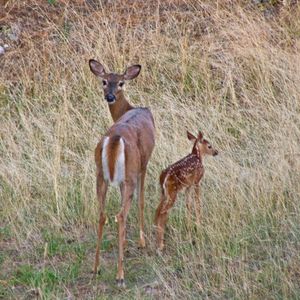Leave young wildlife alone, officials say
YOUNG WILDLIFE -- Does have been dropping fawns throughout the region. Unfortunately, people are picking some of them up.
The Inland Northwest Wildlife Council reports that several people already have called the office asking what they should do with the fawns they found alone in the wild.
The answer in almost all cases: "Leave them in the wild. Don't touch them."
An exception might be when you see fawns with a doe that's been killed in a vehicle collision, said Idaho Fish and Game Department spokesman Phil Cooper.
"In nearly all other cases, the adult female is nearby, watching and waiting to move her offspring to a more secluded place once she is aware the newborn has been found," he said. "With very few exceptions, wild animal mothers do not aggressively defend their young from being picked up by people."
Volunteer wildlife rehabilitators can attempt to raise the animal and place it back in the wild, but this option often fails.
"If you come across a young fawn lying in tall grass, take a wide berth," Cooper said. "Stopping for a moment to take a few photos is fine, but do not pick up the fawn. The doe that produced the fawn left it in the tall grass alone as a strategy to protect it from predators. If the doe stayed with the fawn, her visibility and scent would quickly let predators know where the fawn is. If the doe is spotted and chased by predators, the young fawn would not be able to keep up and would likely become food for the predator.
"Fawns that are picked up and taken from the wild can be returned to the wild provided the return takes place within a few hours. If this is done and the doe is still in the area, she will return to the fawn and move it to a safer place. She will not abandon the fawn due to human scent, something that is a common misperception."

